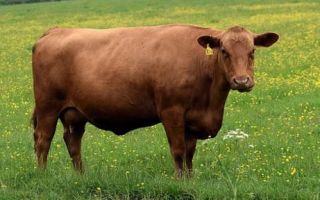The liver fluke (fasciola) is a leaf-shaped flatworm, white in color, with 2 suckers for fixation - oral and abdominal.
Content
Helminth development
The liver fluke lives in the bile ducts of the liver, gall bladder, and sometimes in the pancreas of herbivorous mammals and humans.
The worm reproduces by eggs, which enter the small intestine of the final host and are released into the external environment with feces. Once in the water, the larva emerges from the egg and enters the body of a mollusk, a small pond snail, an intermediate host.
Going through a series of transformations, they turn into larvae covered with a dense shell, which are attached to the stems of aquatic plants. These larvae are infectious to humans and herbivores.
Fascioliasis
The disease occurs in all countries of the world with developed livestock production. Sometimes there are outbreaks of fascioliasis affecting 100 people or more.
The liver fluke is one of the most widespread and dangerous helminths of farm animals. It causes great damage to livestock farms due to the massive death of animals, significant loss of live weight, and decreased milk yield.
Routes of infection
A person becomes infected quite rarely by eating raw wild watercress, sorrel, wild onions, garlic, by consuming raw water from open natural reservoirs, or by ingesting water while swimming.
Animals can also become infected through hay, since the larvae remain viable in it for several months.
Impact on human health
Having entered the human gastrointestinal tract with food, the larvae of fasciolae are freed from their membranes and strive to enter the bile ducts and gallbladder.
From the intestine, worms spread throughout the body either with blood through the portal vein, or exiting through the intestinal wall into the abdominal cavity, then perforate Glisson's capsule and enter the liver.
Moving through the liver tissue, they damage capillaries and parenchyma. Moves are formed, which later turn into fibrous cords. Ultimately, the liver fluke is localized in the bile ducts, less often in the gallbladder.
Sometimes the worms travel through the bloodstream to other organs—usually the lungs. There they form capsules and die. In addition, young fasciolas carry microorganisms from the intestines to the liver that infect stagnant bile and cause poisoning of the body and the formation of micro-inflammations.
Symptoms
The incubation period is 1-8 weeks. There are acute and chronic stages of the disease.
The acute stage is characterized by:
- sudden increase in temperature to 38ºС or more, which lasts 1-3 weeks,
- general weakness,
- increased fatigue,
- enlarged liver and spleen.
Sometimes vomiting and diarrhea, bronchitis with an asthmatic component appear.
The acute stage of the disease lasts 2 months, after which the symptoms subside and it enters the chronic phase.
The main symptoms of the chronic phase are associated with damage to the liver and biliary tract.
The liver is enlarged again, and on palpation its lower edge is dense and painful. Sometimes severe paroxysmal pain occurs in the right hypochondrium. Periods of relative rest alternate with exacerbations, during which jaundice appears. With a long course of the disease, anemia, malnutrition and hepatitis develop.
Diagnostics
At the onset of the disease, fascioliasis can be suspected based on a combination of data such as:
- presence of cases of fascioliasis in the territory,
- eating unwashed greens, water from a pond, or swimming in a pond,
- main symptoms of the disease (liver enlargement, acute onset, pain in the right hypochondrium).
The final diagnosis can be made 3-4 months after infection, when helminth eggs begin to be detected in the duodenal contents or feces.
If helminths live in the gallbladder and large bile ducts, they can be detected by ultrasound of the liver.
Treatment
Treatment of patients with fascioliasis should be carried out in a clinical setting. During the acute period of the disease, bed rest and a diet limited in coarse fiber and fat are indicated. Diet No. 5 is preferred .
Anthelmintic drugs are prescribed after relief of fever and allergic manifestations.
The drugs praziquantel and chloroxyl are used.
According to WHO recommendations, the drug triclabendazole or bitinol is used.
To quickly remove worms from the bile ducts, it is recommended to use choleretic drugs, and to prevent allergic reactions - antihistamines.
The effectiveness of treatment is monitored 3 and 6 months after the course of treatment by examining feces or duodenal contents.
Prevention
To avoid becoming infected with liver fluke, you should not drink raw water from stagnant or slow-flowing sources, or eat unwashed greens. If it is not possible to boil the water, it must be filtered through a canvas.







